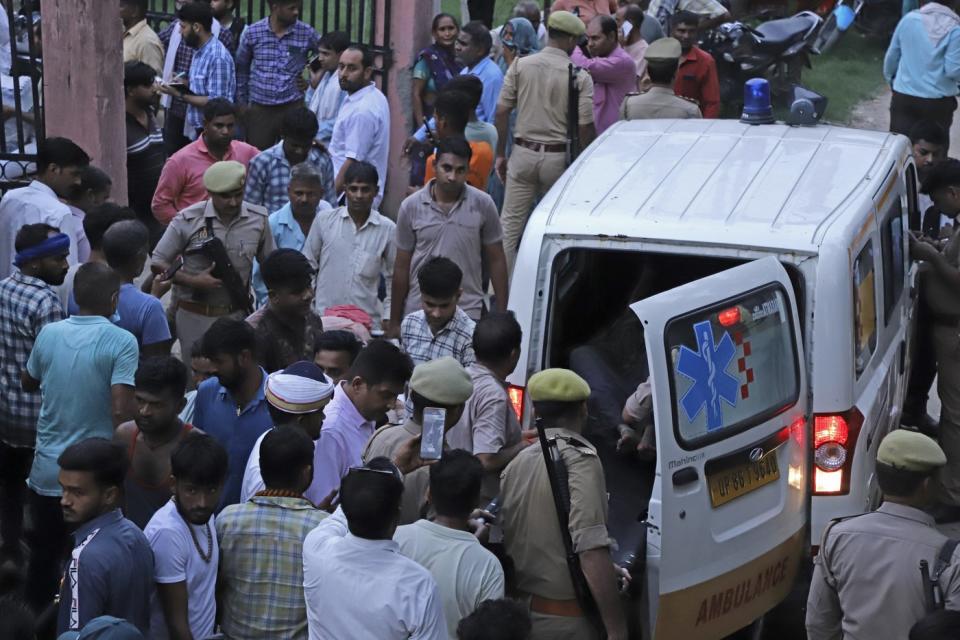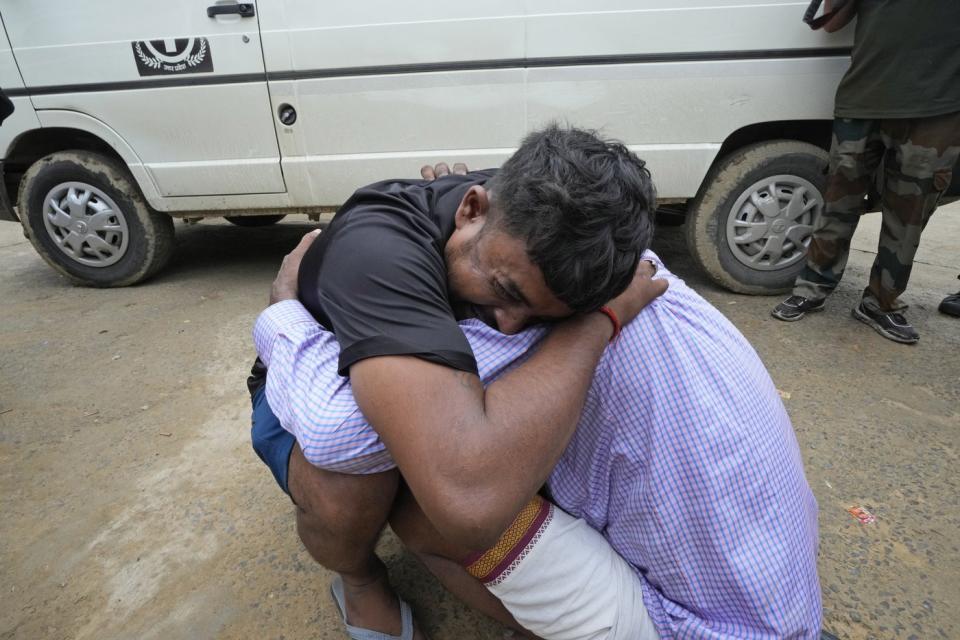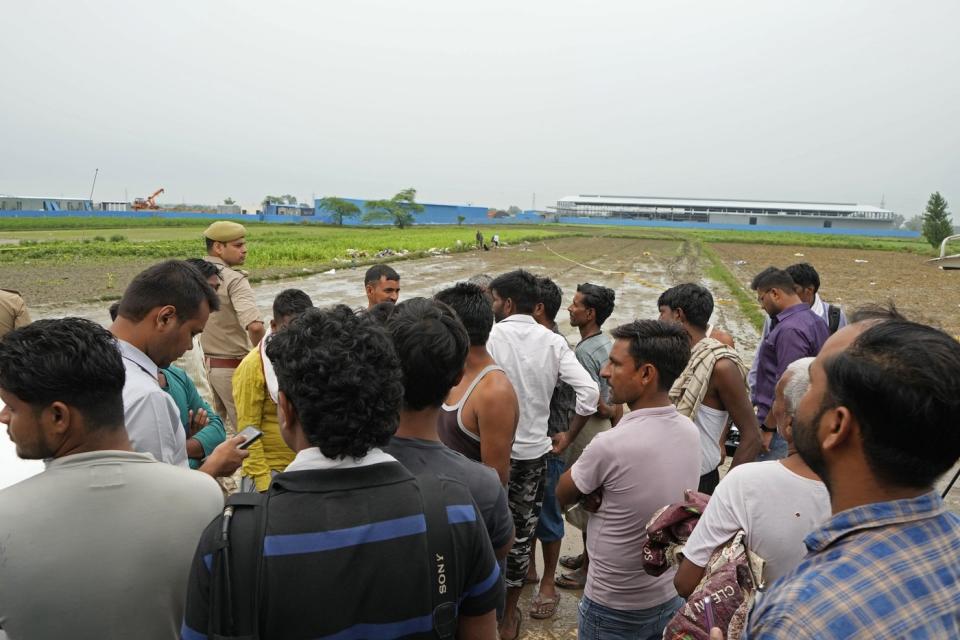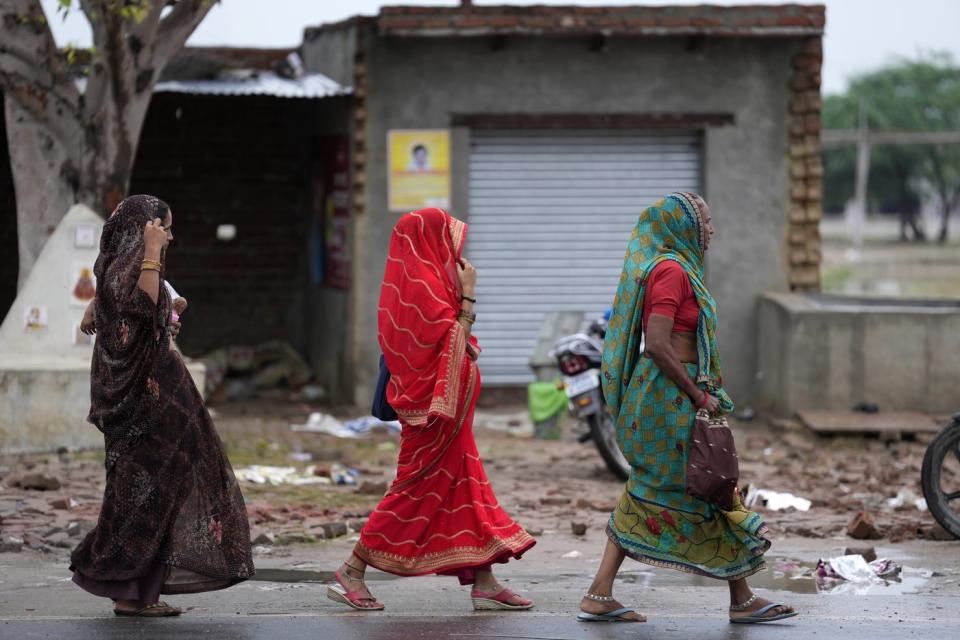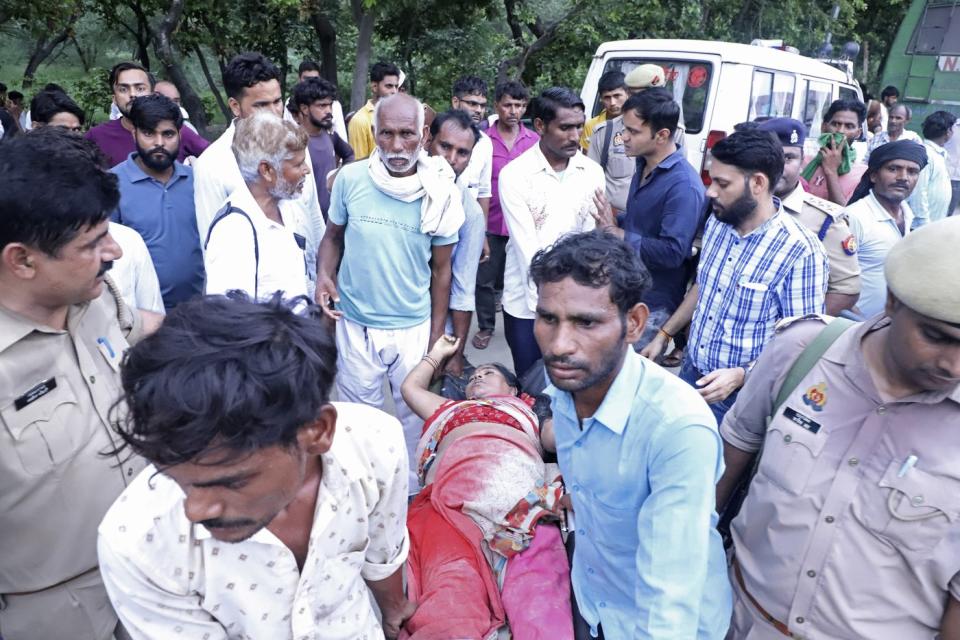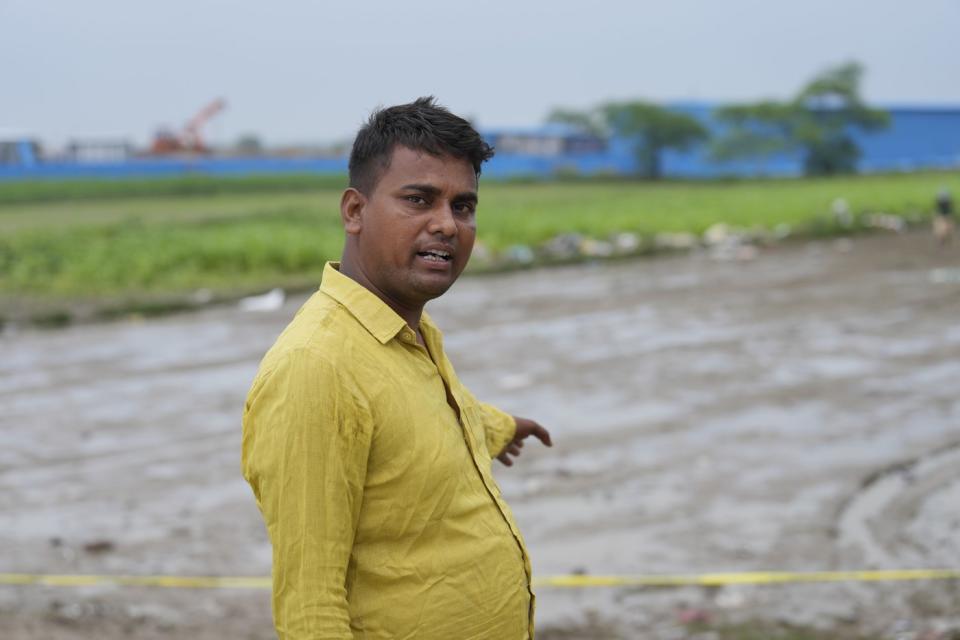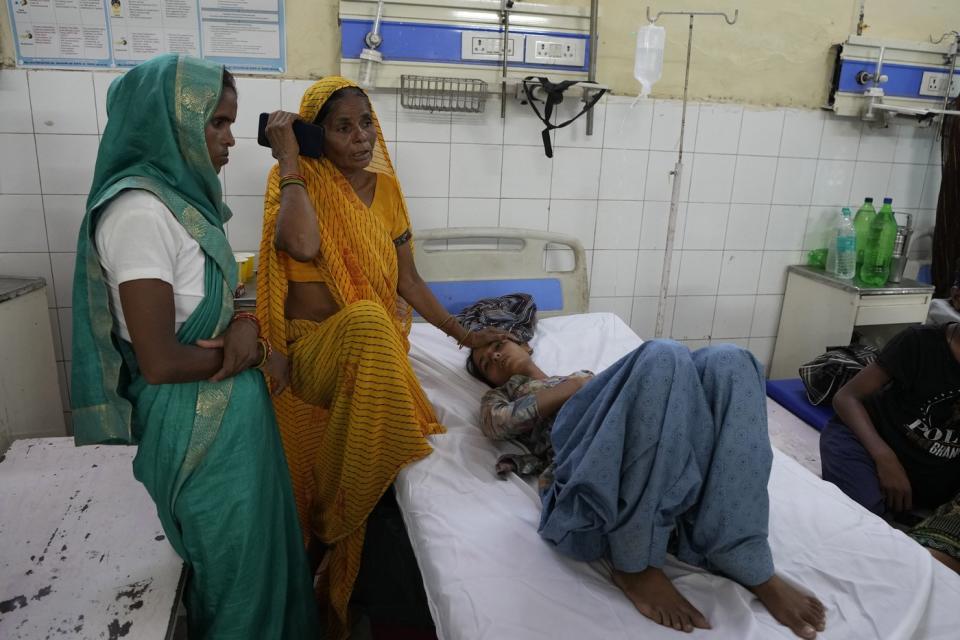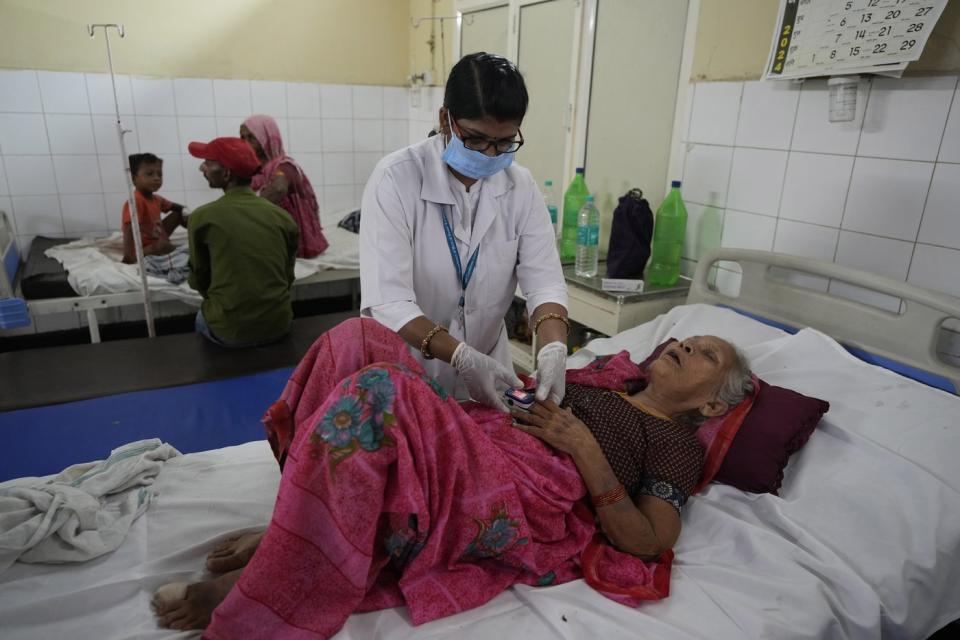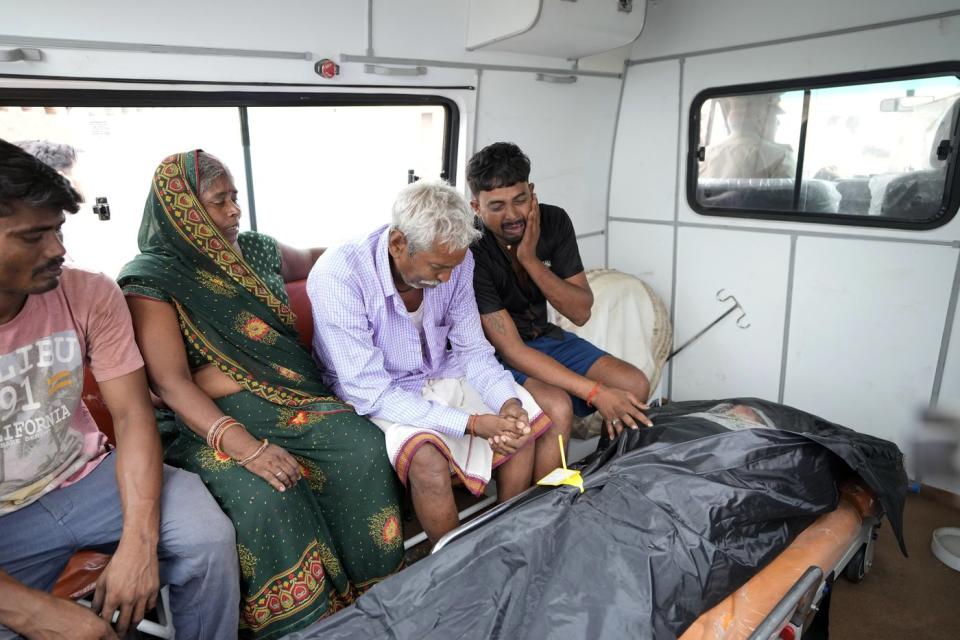How did a religious gathering in India turn into a deadly stampede?
LUCKNOW, India (AP) — More than 120 people died Tuesday in a stampede after a large religious gathering in northern India, one of the deadliest such accidents in recent years.
Authorities are investigating. The stampede among thousands of attendees is believed to have begun as the event, led by a Hindu guru known locally as Bhole Baba, was ending.
What happened?
Authorities believe massive overcrowding, insufficient exits, bad weather and other factors may have contributed to the high death toll.
The event was held in a large tent in a village in Hathras district, located in Uttar Pradesh state, amid sweltering heat and high humidity.
“Initial reports suggest that the closed enclosure of the tent led to suffocation, causing discomfort and panic among attendees,” said senior police officer Shalabh Mathur.
Poor planning was another issue. Some 250,000 people turned up for the event, which was permitted for 80,000 and held in a muddy field. It’s not clear how many were inside the tent.
As the preacher descended from the stage, officials said, devotees surged forward to touch him, causing chaos as volunteers struggled to intervene.
An initial police report suggests that thousands of people then thronged toward the exits. Many slipped on the muddy ground, falling and being crushed by the crowds.
Witnesses described further chaos as more devotees tried to follow the preacher as he left in his car. His security personnel pushed the crowd back, causing more people to fall, according to officials. Most of the dead were women.
Who is Bhole Baba?
The Hindu guru’s name is Suraj Pal, but he goes by Bhole Baba. He is a Dalit, a group at the bottom of India’s caste pyramid, and many of his followers are also from lower castes, female and poor.
He was a policeman until the late 1990s, when he quit his job to become a preacher. While not a household name nationally, he enjoys a large following in Uttar Pradesh and nearby states. Now in his 60s, he's known for dressing in all white, often sporting mirrored aviator sunglasses.
Bhole runs two ashrams in Uttar Pradesh and holds weekly religious gatherings, known as satsangs, where he often talks about leading a simple and virtuous life.
The preacher’s Sri Jagar Guru Baba organization had spent more than two weeks preparing for this event. Police have launched a search for Bhole and other organizers.
In May 2022, Bhole held a gathering that drew over 50,000 people, but no casualties were reported.
How common are stampedes in India?
Deadly crowd surges are fairly common in India, especially during religious festivals where huge gatherings, sometimes in the millions, are held often in cramped areas with shoddy infrastructure and few safety measures.
There have been a number of stampedes in India over the past two decades. Many religious events are organized without adequate preparations, crowd control measures or even prior permission, said Sanjay Srivastava, a disaster management expert.
“Often such functions are held so regularly that sometimes police don’t check whether guidelines are being followed,” he said.
The event on Tuesday violated general safety norms, Srivastava added.
“The function was held in a makeshift tent without ensuring multiple exit routes. Typically, there should be eight to 10 well-marked exits opening into open areas,” he said.
State official Ashish Kumar said there were insufficient exits in the vast tent. It’s not clear how many there were.
One of the last major stampedes occurred in 2013, when pilgrims visiting a temple for a popular Hindu festival in central Madhya Pradesh state trampled each other amid fears that a bridge would collapse. At least 115 were crushed to death or died in the river.
___
This story has been updated to correct that a state official said there were insufficient exits, not that there was only one.
___
Pathi reported from New Delhi.
___
Associated Press religion coverage receives support through the AP’s collaboration with The Conversation US, with funding from Lilly Endowment Inc. The AP is solely responsible for this content.
Biswajeet Banerjee And Krutika Pathi, The Associated Press

